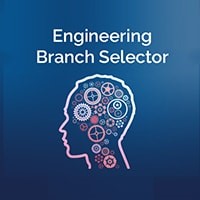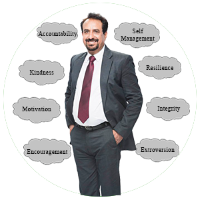Chief Managing Director (CMD) is significant within the administration and vital course of a company. The CMD regularly holds the most elevated official position inside an organization and is capable for managing all viewpoints of its operations, counting setting and executing vital destinations, overseeing assets, and guaranteeing the company’s in general victory.
The CMD is frequently entrusted with driving the senior administration group, giving direction and course to different offices and capacities inside the organization. They play a significant part in driving development, advancement, and productivity whereas too guaranteeing compliance with administrative prerequisites and adherence to moral measures.
In expansion to their operational duties, CMDs regularly serve as the confront of the company, speaking to it to partners such as financial specialists, clients, representatives, and the broader community.
Introduction : CMD full form
A CMD serves as the linchpin among imaginative and prescient and execution, entrusted with the formidable project of charting the route for the entire corporation. With a multifaceted mandate encompassing strategic making plans, operational oversight, and stakeholder engagement, CMDs occupy a pivotal position where foresight, resilience, and decisiveness converge.
The evolution of the CMD position mirrors the ever-changing contours of the company international. From its ancient roots to its cutting-edge manifestations, the CMD has evolved to embody a mix of culture and innovation, drawing upon timeless concepts of management whilst embracing the imperatives of current business dynamics.
At its middle, the function of a CMD is defined with the aid of a relentless pursuit of organizational excellence. Whether navigating turbulent market situations, harnessing disruptive technology, or championing sustainability tasks, CMDs are catalysts for transformation, guiding their businesses in the direction of sustainable growth and enduring success.
Yet, the path to powerful CMD leadership is fraught with demanding situations and complexities. From balancing quick-term imperatives with lengthy-time period imaginative and prescient to fostering a subculture of innovation and inclusivity, CMDs must navigate a myriad of competing priorities even as upholding the very best standards of moral behavior and company governance.
Historical and Evolution: CMD full form
Origins in Corporate Governance: The concept of a CMD strains back to the early twentieth century, broadly speaking in Western company governance structures. It emerged as corporations sought to centralize govt authority and streamline choice-making approaches.
Early Development: In the early tiers, CMDs frequently held blended roles of Chairman and Managing Director, consolidating both strategic and operational responsibilities under a single government leader. This consolidation aimed to enhance efficiency and responsibility within companies.
Expansion and Diversification: As company systems developed and agencies grew in complexity, the CMD role expanded to encompass a broader array of responsibilities beyond conventional operational oversight. This blanketed strategic making plans, economic management, stakeholder relations, and company governance.
Global Adoption: The CMD model gained tremendous adoption throughout industries and geographies, reflecting its effectiveness in offering robust executive leadership and ensuring cohesive control of various enterprise functions.
Regulatory Changes: Over time, regulatory changes and company governance reforms have encouraged the evolution of the CMD position. Regulatory bodies have imposed stricter suggestions on executive duty, transparency, and independence, shaping the expectations and duties of CMDs.
Separation of Roles: In a few corporate governance frameworks, there was a fashion toward setting apart the roles of Chairman and Managing Director. This separation targets to enhance tests and balances within groups, mitigating ability conflicts of interest and promoting unbiased oversight.
Responsibilities and Duties: CMD full form
Strategic Planning: The CMD is liable for developing and articulating the business enterprise’s lengthy-time period strategic vision and desires. This consists of figuring out boom opportunities, assessing marketplace developments, and formulating techniques to attain aggressive benefit.
Operational Oversight: The CMD oversees all components of the organisation’s operations, ensuring green and powerful execution of everyday sports. This includes monitoring key overall performance signs, handling resources, and implementing strategies to optimize operational overall performance.
Financial Management: The CMD performs a relevant function in monetary choice-making, which includes budgeting, forecasting, and aid allocation. They are liable for making sure monetary balance, managing danger, and riding profitability thru sound economic management practices.
Stakeholder Relations: The CMD serves because the number one liaison between the company and its stakeholders, inclusive of investors, clients, personnel, regulators, and the broader network. They cultivate effective relationships, cope with stakeholder concerns, and uphold the organisation’s reputation and credibility.
Leadership and Talent Management: The CMD presents strong management and direction to senior management and personnel, fostering a lifestyle of duty, innovation, and excellence. They recruit and expand top expertise, mentor destiny leaders, and promote variety and inclusion within the agency.
Corporate Governance: The CMD ensures compliance with legal guidelines, regulations, and company governance requirements, upholding ideas of transparency, integrity, and ethical behavior. They work carefully with the board of directors to set up governance guidelines and practices that sell responsibility and shield shareholder pursuits.
Role: CMD full form
Strategic Leadership: Develop and implement the company’s vision, mission, and overall strategy, ensuring alignment with long-term goals.
Operational Oversight: Manage daily operations to ensure efficiency and compliance with legal and regulatory requirements.
Financial Management: Oversee financial performance, including budgeting, forecasting, and reporting, ensuring financial health and sustainability.
Stakeholder Engagement: Act as the primary spokesperson, building and maintaining relationships with shareholders, customers, suppliers, and the community.
Risk and Governance: Identify and mitigate risks, ensure robust corporate governance, and uphold ethical standards and values within the organization.
Duties: CMD full form
Strategic Planning: Develop and implement the corporation’s lengthy-term strategic desires and targets. This involves putting the overall course and ensuring alignment with the company’s imaginative and prescient and project.
Leadership: Provide strong leadership to the executive crew and personnel. Foster a wonderful organizational tradition, motivate body of workers, and ensure effective group collaboration.
Decision-Making: Make excessive-level choices regarding policy, method, and operations. This consists of approving budgets, predominant tasks, and investments.
Financial Oversight: Oversee the agency’s financial overall performance, including budgeting, forecasting, and monetary reporting. Ensure economic stability and profitability.
Stakeholder Communication: Act as the primary liaison among the enterprise and its stakeholders, along with shareholders, board participants, clients, and the general public. Communicate key statistics and preserve wonderful relationships.
Risk Management: Identify and manipulate risks to the agency. Implement techniques to mitigate capacity threats and make sure compliance with guidelines.
Operational Efficiency: Ensure that the agency’s operations are walking easily and successfully. This includes optimizing strategies, improving productivity, and managing resources successfully.
Innovation and Growth: Drive innovation and are searching for opportunities for boom and enlargement. Evaluate new enterprise opportunities, partnerships, and market trends to preserve aggressive gain.
Qualifications: CMD full form
| Qualification | Description |
|---|---|
| Education | Advanced degree in business administration, management, finance, or a related field (e.g., MBA, PhD). |
| Experience | Extensive executive leadership experience, preferably in progressively responsible roles within the industry. |
| Leadership Skills | Demonstrated ability to lead and inspire teams, drive change, and foster a culture of innovation and excellence. |
| Strategic Thinking | Strong strategic acumen with the ability to develop and execute long-term business strategies. |
| Financial Acumen | Proficient in financial management, including budgeting, forecasting, and financial analysis. |
| Industry Expertise | In-depth knowledge of the industry, market trends, and competitive landscape. |
| Communication Skills | Excellent communication and interpersonal skills, with the ability to effectively engage with stakeholders. |
| Problem-Solving Ability | Proven track record of effectively identifying and addressing complex business challenges and opportunities. |
| Decision-Making Skills | Sound judgment and decision-making skills, with the ability to make timely and informed decisions. |
| Ethical Conduct | Commitment to ethical conduct and integrity, with a strong sense of corporate responsibility. |
| Adaptability and Resilience | Ability to thrive in a fast-paced, dynamic environment and navigate ambiguity and uncertainty with resilience. |
Impact of CMDs: CMD full form
Strategic Vision: CMDs play a pivotal role in shaping the strategic course of groups. Their imaginative and prescient and foresight set the path for the company’s destiny increase and achievement.
Operational Efficiency: CMDs are liable for overseeing all components of organizational operations, making sure efficiency, and optimizing aid allocation to maximize productiveness.
Financial Performance: CMDs have a big impact on the economic performance of the corporation. Through effective monetary management and strategic selection-making, they power revenue increase, profitability, and shareholder fee.
Leadership and Culture: CMDs set the tone for organizational way of life and management. Their leadership fashion, values, and behaviors have an effect on employee morale, engagement, and performance.
Innovation and Adaptation: CMDs pressure innovation and foster a culture of creativity and model in the corporation. They encourage experimentation, embody trade, and power tasks to live beforehand of marketplace tendencies and technological improvements.
Stakeholder Relations: CMDs play a important function in managing relationships with numerous stakeholders, together with buyers, customers, employees, and regulators. Their potential to effectively speak and have interaction with stakeholders influences the organisation’s reputation and lengthy-term sustainability.
Corporate Governance: CMDs uphold standards of company governance and ethical behavior, ensuring transparency, accountability, and compliance with legal guidelines and rules. They work carefully with the board of administrators to establish governance regulations and practices that protect shareholder pastimes.
Skills Required for the Role
| Skill | Description |
|---|---|
| Leadership | Ability to inspire and motivate teams, provide direction, and drive organizational success. |
| Strategic Thinking | Capacity to develop and execute long-term strategic plans aligned with organizational goals. |
| Financial Acumen | Proficiency in financial management, including budgeting, forecasting, and financial analysis. |
| Communication | Excellent verbal and written communication skills, with the ability to effectively convey ideas and information. |
| Decision-Making | Sound judgment and decision-making skills, with the ability to make timely and informed decisions. |
| Problem-Solving | Strong analytical and problem-solving skills to identify issues, evaluate options, and implement solutions. |
| Adaptability | Ability to thrive in a fast-paced, dynamic environment, and navigate ambiguity and change with resilience. |
| Interpersonal Skills | Effective interpersonal skills to build relationships, negotiate, and collaborate with stakeholders. |
| Emotional Intelligence | Ability to understand and manage emotions, empathize with others, and navigate interpersonal dynamics. |
| Strategic Networking | Capacity to build and leverage strategic relationships with stakeholders, industry peers, and partners. |
Challenges
Market Volatility: CMDs ought to navigate unpredictable market conditions, along with monetary downturns, geopolitical instability, and shifts in purchaser options, which can effect business overall performance and strategic choice-making.
Competitive Pressures: CMDs face excessive competition inside their industries, requiring them to constantly innovate, differentiate their services, and adapt to changing market dynamics to hold or benefit marketplace proportion.
Technological Disruption: Rapid improvements in technology pose challenges for CMDs, as they have to include virtual transformation, leverage emerging technology, and navigate cybersecurity risks to stay aggressive and relevant inside the digital age.
Regulatory Compliance: CMDs are accountable for making sure compliance with a complicated and ever-converting regulatory landscape, spanning diverse jurisdictions and industries. Failure to comply with guidelines can result in prison consequences, reputational harm, and monetary consequences.
Talent Management: Recruiting, preserving, and growing top expertise is a substantial assignment for CMDs, specifically in industries dealing with skill shortages or extreme competition for skills. CMDs should foster a high-quality place of business way of life, put money into employee development, and enforce powerful skills control strategies to draw and hold key personnel.
Organizational Change: Implementing organizational alternate tasks, which includes mergers, acquisitions, restructuring, or cultural alterations, may be challenging for CMDs. Resistance to change, integration troubles, and cultural clashes may additionally arise, requiring effective alternate control techniques and management.
Risk Management: CMDs must discover, check, and mitigate various risks going through the enterprise, together with financial, operational, prison, an
Financial Oversight
Budgeting and Financial Planning
This section covers the techniques worried in creating the yearly budget, setting monetary dreams, and planning for the agency’s financial future. It consists of methodologies for forecasting sales and expenses, aligning monetary plans with strategic desires, and making sure that the enterprise remains on a valid monetary footing.
Profit and Loss Management
An in-depth observe managing the employer’s income and charges to maximise profitability. This includes studying monetary statements, identifying areas for price reduction, and techniques to enhance income margins. It additionally entails everyday monitoring and reporting on financial performance to make informed business selections.
Capital Allocation and Investments
This element specializes in how the employer allocates its monetary sources to various initiatives and investments. It covers the selection-making system for capital fees, evaluating potential returns on funding, and managing the organization’s
Future Outlook
| Aspect | Description |
|---|---|
| Industry Trends and Challenges | Analyzing current and emerging trends within the industry, identifying potential challenges, and understanding their impact on the organization. |
| Growth Opportunities | Exploring new markets, products, or services that can drive future growth. This includes diversification strategies and expansion plans. |
| Technological Advancements | Evaluating the potential of new technologies to disrupt the industry and how the organization can leverage these advancements for competitive advantage. |
| Regulatory Changes | Assessing upcoming changes in regulations and compliance requirements, and planning how to adapt to maintain business continuity. |
| Economic Forecasts | Reviewing economic indicators and forecasts to anticipate their effects on the organization’s operations and strategy. |
| Environmental and Social Impacts | Planning for sustainability and social responsibility, considering the long-term environmental and social impacts of business operations. |
| Competitor Analysis | Monitoring competitors’ strategies and anticipating moves that could affect the organization’s market position. |
| Succession Planning | Preparing for leadership transitions to ensure stability and continuity in the organization’s future. |
| Risk Management | Identifying potential risks in the future landscape and developing strategies to mitigate them. |
| Vision for the Future | Articulating the long-term vision for the organization, outlining the goals, and setting the direction for the next phase of growth and development. |
FAQ's
Q1:What is a Chief Managing Director (CMD)?
A: CMD is the highest-ranking executive in a company responsible for overall management and strategic direction
Q2: What are the primary responsibilities of a CMD?
A: A CMD oversees all aspects of company operations, sets strategic goals, manages resources, and represents the company to stakeholders.
Q3:How does a CMD differ from other executive roles like CEO or COO?
A: While roles may vary between companies, typically a CMD combines the responsibilities of both CEO (Chief Executive Officer) and COO (Chief Operating Officer).
Q4: What are some key challenges faced by CMDs?
A: Challenges may include navigating market volatility, managing organizational change, balancing short-term results with long-term sustainability, and staying abreast of regulatory changes.
Q5:What is the role of a CMD in strategic decision-making?
A: CMDs play a central role in setting the company’s strategic direction, identifying opportunities for growth, assessing risks, and making key investment decisions.



















